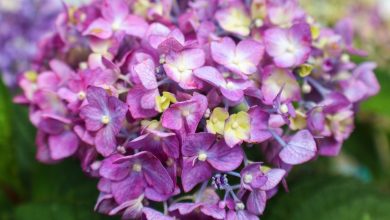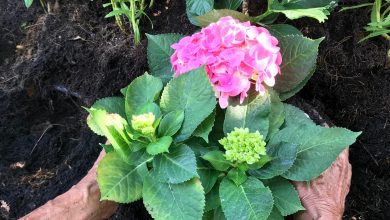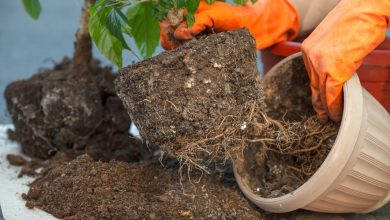Making the Most of Your Hydrangeas: Seasonal Bloom Lengths

Are you looking for ways to make the most of your hydrangeas? Hydrangeas are a beautiful and popular flower, but they can be tricky to care for. Knowing the seasonal bloom lengths of different types of hydrangeas can help you plan your garden and ensure that your flowers stay healthy and vibrant. In this article, we’ll discuss the seasonal bloom lengths of various hydrangea varieties and provide tips for making the most of your hydrangeas.
Maximizing Hydrangea Blooms: Tips for Prolonging Flowering Periods
Hydrangeas are beautiful flowering shrubs that produce a stunning display of large, colorful blooms. The blooms can last for several weeks, but the flowering period can be extended with proper care. Here are some tips for maximizing your hydrangea blooms and prolonging their flowering period.
First, it’s important to choose the right variety of hydrangea for your climate. Different varieties of hydrangeas bloom at different times of the year, so it’s important to choose one that will bloom when you want it to.
Second, make sure your hydrangea is planted in the right spot. Hydrangeas need plenty of sunlight to bloom, so make sure to plant them in a spot that gets at least six hours of direct sunlight each day.
Third, make sure your hydrangea is getting enough water. Hydrangeas need to be watered regularly, especially during dry periods. If you’re not sure how much water your hydrangea needs, check the soil around the base of the plant. If it’s dry, it’s time to water.
Fourth, fertilize your hydrangea regularly. Fertilizing your hydrangea will help it produce more blooms and will help prolong the flowering period. Use a fertilizer specifically designed for hydrangeas and follow the instructions on the package.
Fifth, prune your hydrangea regularly. Pruning your hydrangea will help keep it healthy and will encourage more blooms. Prune in the late winter or early spring, just before the new growth begins.
Finally, deadhead your hydrangea. Deadheading is the process of removing spent blooms from the plant. This will help encourage new blooms and will help prolong the flowering period.
By following these tips, you can maximize your hydrangea blooms and prolong their flowering period. With the right care, your hydrangea will produce a stunning display of blooms that will last for weeks.
How to Prune Hydrangeas for Optimal Growth and Bloom
Pruning hydrangeas is an important part of maintaining their health and promoting optimal growth and bloom. Pruning hydrangeas can be intimidating, but with the right knowledge and tools, it can be a straightforward process. Here are some tips for pruning hydrangeas for optimal growth and bloom.
First, determine the type of hydrangea you have. Different types of hydrangeas require different pruning techniques. For example, bigleaf hydrangeas should be pruned in late winter or early spring, while oakleaf hydrangeas should be pruned in late summer or early fall.
Second, identify the oldest stems on the plant. These are the stems that should be pruned first. Remove any dead, diseased, or damaged stems, as well as any stems that are growing in the wrong direction.
Third, prune the stems that are left. Start by cutting off the top third of the stem, and then prune the sides of the stem to encourage bushier growth. Be sure to make your cuts at a 45-degree angle, just above a leaf node.
Fourth, remove any spent blooms. This will encourage the plant to produce more flowers.
Finally, fertilize the plant after pruning. This will help the plant to recover from the pruning and encourage healthy growth.
Pruning hydrangeas can be intimidating, but with the right knowledge and tools, it can be a straightforward process. Following these tips will help you to prune your hydrangeas for optimal growth and bloom.
Understanding Hydrangea Varieties: Choosing the Right Plant for Your Garden
Hydrangeas are a popular choice for gardens due to their stunning blooms and easy maintenance. With so many varieties to choose from, it can be difficult to decide which one is right for your garden. Understanding the different types of hydrangeas and their characteristics can help you make the best decision for your garden.
The most common type of hydrangea is the bigleaf hydrangea (Hydrangea macrophylla). This variety has large, rounded flower clusters that can be either pink or blue, depending on the soil pH. Bigleaf hydrangeas are easy to grow and thrive in partial shade. They prefer moist, well-drained soil and can reach heights of up to six feet.
The oakleaf hydrangea (Hydrangea quercifolia) is another popular variety. This type of hydrangea has large, cone-shaped flower clusters that are white or pink. It is a hardy plant that can tolerate full sun and partial shade. Oakleaf hydrangeas prefer acidic soil and can reach heights of up to eight feet.
The panicle hydrangea (Hydrangea paniculata) is a fast-growing variety that produces large, cone-shaped flower clusters. These clusters can be white, pink, or even blue, depending on the soil pH. Panicle hydrangeas are hardy and can tolerate full sun and partial shade. They prefer moist, well-drained soil and can reach heights of up to ten feet.
The smooth hydrangea (Hydrangea arborescens) is a compact variety that produces small, rounded flower clusters. These clusters can be white, pink, or blue, depending on the soil pH. Smooth hydrangeas are easy to grow and thrive in full sun or partial shade. They prefer moist, well-drained soil and can reach heights of up to four feet.
The climbing hydrangea (Hydrangea anomala) is a woody vine that produces small, white flower clusters. This variety is hardy and can tolerate full sun or partial shade. It prefers moist, well-drained soil and can reach heights of up to thirty feet.
When choosing a hydrangea for your garden, it is important to consider the size, color, and growing conditions of the variety. By understanding the different types of hydrangeas and their characteristics, you can make an informed decision and choose the right plant for your garden.
Enhancing Hydrangea Color: Fertilizing and Soil Amendments
Enhancing the color of hydrangeas is a great way to add a pop of color to your garden. Fertilizing and soil amendments are two of the most effective ways to bring out the best in your hydrangeas.
Fertilizing is an important part of maintaining healthy hydrangeas. The type of fertilizer you use will depend on the type of hydrangea you have. For example, bigleaf hydrangeas need a balanced fertilizer with an equal ratio of nitrogen, phosphorus, and potassium. Fertilize your hydrangeas once a month during the growing season.
Soil amendments are also important for enhancing the color of your hydrangeas. Adding organic matter such as compost or manure to the soil can help to improve the soil structure and provide essential nutrients. You can also add soil acidifiers such as sulfur or aluminum sulfate to lower the pH of the soil and make it more acidic. This will help to bring out the blues and purples in your hydrangeas.
When it comes to enhancing the color of your hydrangeas, fertilizing and soil amendments are key. Make sure to use the right type of fertilizer for your particular type of hydrangea and add organic matter and soil acidifiers to the soil to bring out the best in your plants. With the right care, you can enjoy beautiful, vibrant hydrangeas in your garden.
Planting and Care for Hydrangeas: Best Practices for Long-Lasting Blooms
Hydrangeas are one of the most beautiful and versatile flowering shrubs, with large, showy blooms that come in a variety of colors. They’re a popular choice for gardeners looking to add a touch of color and texture to their outdoor space. With proper planting and care, you can enjoy long-lasting blooms from your hydrangeas for years to come.
When planting hydrangeas, it’s important to choose a location that gets plenty of sunlight. Hydrangeas prefer full sun to partial shade, so choose a spot that gets at least six hours of direct sunlight each day. Make sure the soil is well-draining and amended with organic matter like compost or peat moss. If you’re planting multiple hydrangeas, make sure to space them at least three feet apart to give them room to grow.
Once your hydrangeas are planted, you’ll need to water them regularly. Aim to keep the soil evenly moist, but not soggy. If you’re in a particularly dry climate, you may need to water your hydrangeas more often. During the summer months, you can also add a layer of mulch around the base of the plant to help retain moisture.
Fertilizing your hydrangeas is also important for long-lasting blooms. Use a balanced fertilizer that’s formulated for flowering plants and apply it according to the directions on the package. You can also add a layer of compost around the base of the plant to help provide additional nutrients.
Finally, pruning is an important part of hydrangea care. Prune your hydrangeas in late winter or early spring, before new growth begins. This will help encourage more blooms and a bushier, fuller plant. Make sure to remove any dead or diseased branches, as well as any branches that are growing in an undesirable direction.
With the right planting and care, you can enjoy long-lasting blooms from your hydrangeas for years to come. Keep these best practices in mind and you’ll be sure to have a beautiful display of hydrangeas in your garden.
In conclusion, hydrangeas are a beautiful and versatile addition to any garden. Knowing the seasonal bloom lengths of each variety of hydrangea can help you plan for a long-lasting display of color and texture. With a little bit of knowledge and some careful planning, you can make the most of your hydrangeas and enjoy them for years to come.
Excerpt
Hydrangeas are a popular flowering shrub, and with proper care, they can bloom for up to four months. To make the most of your hydrangeas, it is important to understand the seasonal bloom lengths of the different varieties.



